It looks like you're using an Ad Blocker.
Please white-list or disable AboveTopSecret.com in your ad-blocking tool.
Thank you.
Some features of ATS will be disabled while you continue to use an ad-blocker.
share:
If you like animals, or not, this is going to astonish you!
The fox is now the most widespread of all carnivores. While other wildlife struggles to survive in the shrinking wilderness, the fox adapts and thrives, and how it does so has only recently been revealed.
Foxes come in may shapes and sizes

At least 97% of the photo receptors in their eyes are Rods rather than cones.
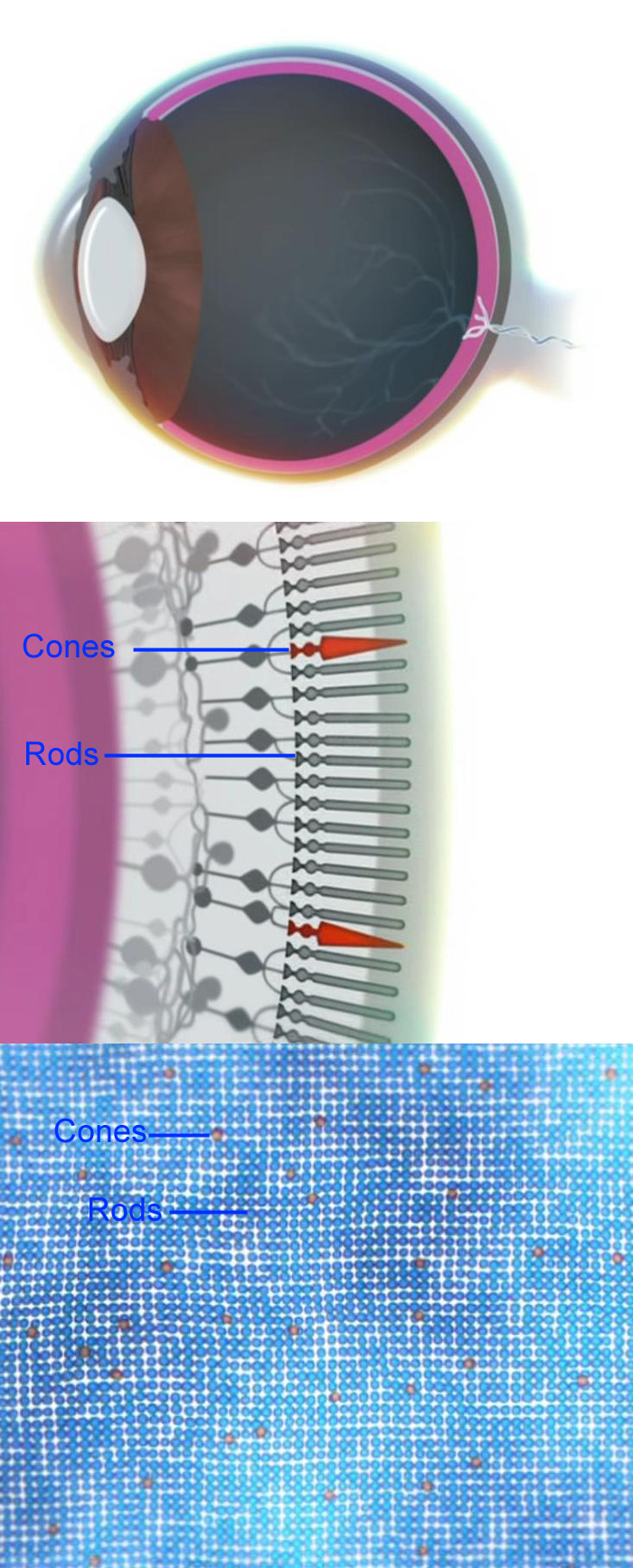
Cone cells detect color, whereas rods are more sensitive in low light levels.
Having such a high proportion of rods gives the fox acute night vision.
However, for the fox, the Rod cells serve a completely different purpose during the day!
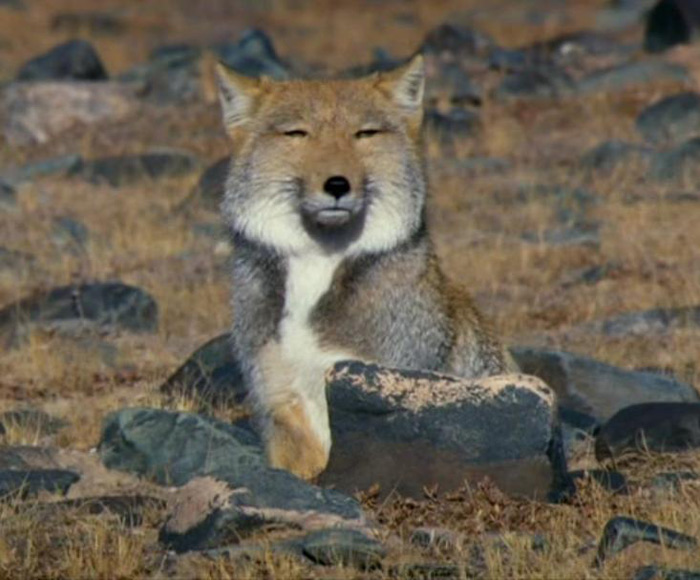
A Tibetan sand fox sits watching for movement, how it detects movement is the first astonishing thing about the Fox's eyes (but not the MOST astonishing, keep reading).
During the day the Rod cells in the foxes eyes switch from being light sensors and become motion sensors, allowing the fox to see the twitch of a rabbits nose a kilometre away! (Watch out Beezer!)
Because the rods are so densely packed, if anything moves, it will trigger other rods, triggering the fox to lock on to its target.
But it's not just the retina that helps the fox hunt in the day time, the shape of the pupil is also key!
Wolves and dogs have round pupils.

But foxes have vertically slit pupils.
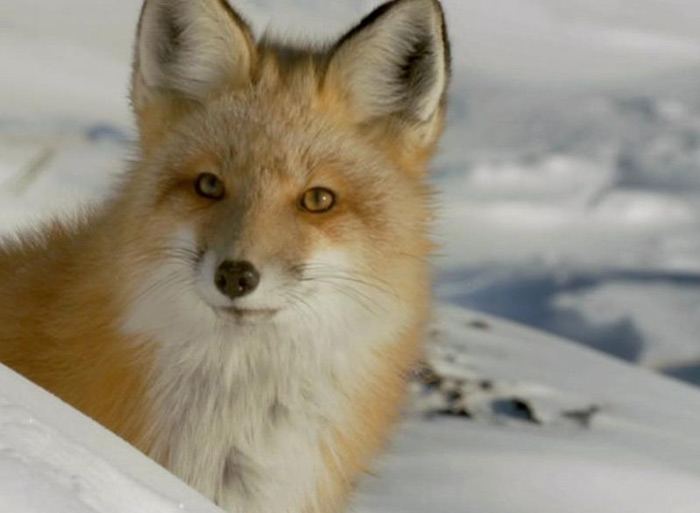
Its always been thought that the slit pupil gave better night vision, but new research now shows the slit actually helps them to hunt during the day time.
Eyes are damaged by ultraviolet light, and the sun emits lots of uv light, so a slit pupil can help reduce the amount of uv that enters the eye, but for the fox it doesn't stop there!
In the pic below the colored rings show the areas of the eyes used to detect different colors.
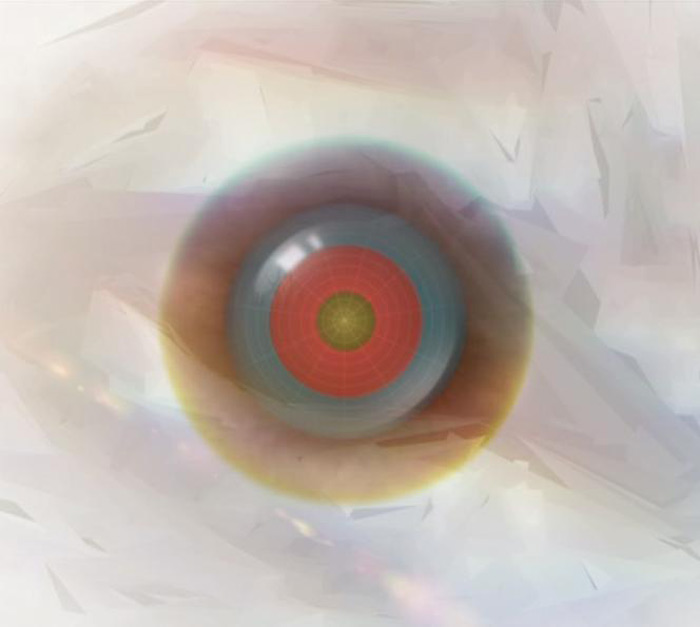
During daylight round eyes reduce the size of the pupil to restrict the amount of light entering the eyes, but this completely blocks the outer color detectors, this means those colors cant be focused, lowering the image quality.
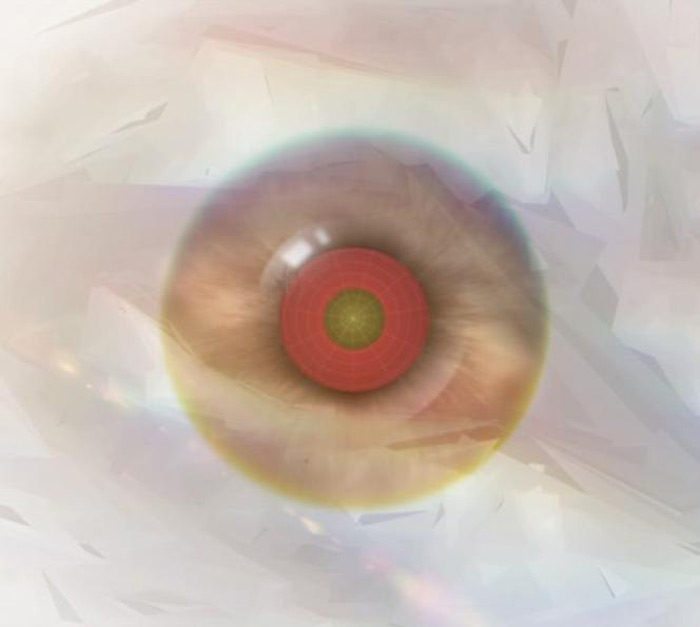
But when a slit pupil reduces in size, all colors remain in focus because a portion of each color ring is still exposed!
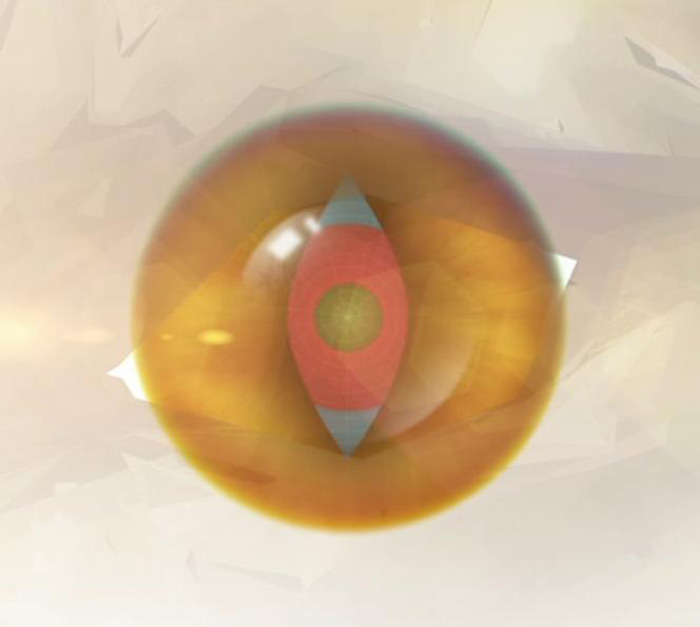
This means that during the daylight the fox can reduce the amount of light entering its eyes, and therefore protect its eyes from uv damage, but still have a high quality image! The result is the ability to hunt at any time of day or night.
Think thats impressive? Well, just wait until you read the following!
Superior eyesight is of no use when prey is hidden beneath the snow, and for this reason the fox has another sense, and its one that no other animal on this earth has harnessed for hunting.
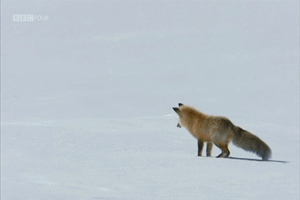
A fox creeps forward listening for the sound of a mouse. But listening isn't all it's doing!!!
In 2010 researchers made an astonishing discovery. They noticed that when foxes do the mouse pounce and dive into the snow, they had a hit rate of just eighteen percent. However, if the fox was facing in a north easterly direction the hit rate rose to a staggering seventy three percent.
Why?
As the fox creeps forward it listens to the sound of the mouse, and as it does so, it waits until the angle of the sound hitting its ears matches the slope of the earths magnetic field. When it does, the fox knows the mouse is a fixed distance away, and it can calculate how far to jump to land right on top of the mouse.
How does the fox detect the earths magnetic field?
IT CAN SEE IT!!!
The foxes eye contains Crypto chrome (spelling?) which is sensitive to magnetism.
I can't help but wonder what the world looks like through the eyes of a fox. I always knew they were astonishing creatures, they are extremely intelligent, able to see clearly at night, and now we learn they use and can see magnetism!
Just wow!
ETA: Thanks to Trueman and his THREAD which reminded me to post this.
ETA2: Should also mention the source, a BBC4 documentary.
The fox is now the most widespread of all carnivores. While other wildlife struggles to survive in the shrinking wilderness, the fox adapts and thrives, and how it does so has only recently been revealed.
Foxes come in may shapes and sizes

At least 97% of the photo receptors in their eyes are Rods rather than cones.

Cone cells detect color, whereas rods are more sensitive in low light levels.
Having such a high proportion of rods gives the fox acute night vision.
However, for the fox, the Rod cells serve a completely different purpose during the day!

A Tibetan sand fox sits watching for movement, how it detects movement is the first astonishing thing about the Fox's eyes (but not the MOST astonishing, keep reading).
During the day the Rod cells in the foxes eyes switch from being light sensors and become motion sensors, allowing the fox to see the twitch of a rabbits nose a kilometre away! (Watch out Beezer!)
Because the rods are so densely packed, if anything moves, it will trigger other rods, triggering the fox to lock on to its target.
But it's not just the retina that helps the fox hunt in the day time, the shape of the pupil is also key!
Wolves and dogs have round pupils.

But foxes have vertically slit pupils.

Its always been thought that the slit pupil gave better night vision, but new research now shows the slit actually helps them to hunt during the day time.
Eyes are damaged by ultraviolet light, and the sun emits lots of uv light, so a slit pupil can help reduce the amount of uv that enters the eye, but for the fox it doesn't stop there!
In the pic below the colored rings show the areas of the eyes used to detect different colors.

During daylight round eyes reduce the size of the pupil to restrict the amount of light entering the eyes, but this completely blocks the outer color detectors, this means those colors cant be focused, lowering the image quality.

But when a slit pupil reduces in size, all colors remain in focus because a portion of each color ring is still exposed!

This means that during the daylight the fox can reduce the amount of light entering its eyes, and therefore protect its eyes from uv damage, but still have a high quality image! The result is the ability to hunt at any time of day or night.
Think thats impressive? Well, just wait until you read the following!
Superior eyesight is of no use when prey is hidden beneath the snow, and for this reason the fox has another sense, and its one that no other animal on this earth has harnessed for hunting.

A fox creeps forward listening for the sound of a mouse. But listening isn't all it's doing!!!
In 2010 researchers made an astonishing discovery. They noticed that when foxes do the mouse pounce and dive into the snow, they had a hit rate of just eighteen percent. However, if the fox was facing in a north easterly direction the hit rate rose to a staggering seventy three percent.
Why?
As the fox creeps forward it listens to the sound of the mouse, and as it does so, it waits until the angle of the sound hitting its ears matches the slope of the earths magnetic field. When it does, the fox knows the mouse is a fixed distance away, and it can calculate how far to jump to land right on top of the mouse.
How does the fox detect the earths magnetic field?
IT CAN SEE IT!!!
The foxes eye contains Crypto chrome (spelling?) which is sensitive to magnetism.
I can't help but wonder what the world looks like through the eyes of a fox. I always knew they were astonishing creatures, they are extremely intelligent, able to see clearly at night, and now we learn they use and can see magnetism!
Just wow!
ETA: Thanks to Trueman and his THREAD which reminded me to post this.
edit on 29-4-2015 by VoidHawk because: (no reason given)
ETA2: Should also mention the source, a BBC4 documentary.
edit on 29-4-2015 by VoidHawk because: (no reason given)
I find this so cool I may never hunt a fox again…well except around the hen house lol. Seriously though that is some amazing stuff right there. I
only wish I could have some implanted
a reply to: VoidHawk
Fascinating details about foxes. Worth anybody's time. 'Tops off my early evening respite in the yard looking with binocs at four baby crows high in a pine tree. I have always hated crows, far more intelligent than me. These four waiting for mama to come feed, had huge mouths that were as red as a male cardinal bird. 'Don't hate them so much now, those little birds. Nor the foxes I used to hunt either.
(Sorry, but ATS has been weak for several days now, and we need to smile and make some 'warm fuzzies' in the meantime.)
Fascinating details about foxes. Worth anybody's time. 'Tops off my early evening respite in the yard looking with binocs at four baby crows high in a pine tree. I have always hated crows, far more intelligent than me. These four waiting for mama to come feed, had huge mouths that were as red as a male cardinal bird. 'Don't hate them so much now, those little birds. Nor the foxes I used to hunt either.
(Sorry, but ATS has been weak for several days now, and we need to smile and make some 'warm fuzzies' in the meantime.)
edit on 29-4-2015
by Aliensun because: (no reason given)
Foxes are amazing survivors.
I have seen them in the middle of the desert in Utah where you wouldn't imagine anything could live.
There is no water for many miles.
I have seen them in the middle of the desert in Utah where you wouldn't imagine anything could live.
There is no water for many miles.
originally posted by: RickyD
I find this so cool I may never hunt a fox again
I went out with my brother inlaw one day to shoot a fox that was stealing his baby geese. Seeing the fox when it was dead completly changed my view of killing wild animals. He saw a fox - a thief, all I could see was a dead dog, and I love dogs. Went home miserable that day.
I love foxes.
But they're a terrible pest in Australia.
I'd like to say it was ignorance of the 19th century that brought them here, but they were introduced in Tasmania just 15-20 years ago.
But they're a terrible pest in Australia.
I'd like to say it was ignorance of the 19th century that brought them here, but they were introduced in Tasmania just 15-20 years ago.
originally posted by: interupt42
a reply to: VoidHawk
Amazing, but how well do they drive.
Foxes have gone green, so they gave up driving
a reply to: VoidHawk
We have a lovely ranch here with sheep, chickens, doves...and yes, foxes. Oh, the foxes are not intentional, by no means. Pretty much where you have chickens...you have foxes. So, after intense research, we found a sure fire way to rid our lives of those pesky, thieving, varmints.
Patterdale Terriors! We have two, male and female, but very soon (like in 3 weeks) we will have a few more. These dogs are from Northern England and bred specifically for hunting. They will not be gentle with the prey.
Patterdales look like black lab "forever puppies" and because of their size, could be considered "toys". But they have a set of choppers that rival a Mastiff! Most people have never seen a Patterdale or have always thought they were just black lab pups. But they are wonderful, loving, protective, mindful, super fast, smart, fox (gopher and lizard) hunting dogs.
If you are interested in learning more about the Patterdales and how they are bred specifically for rid-a-fox, please click on the link below.
Patterdale Terriers
We have a lovely ranch here with sheep, chickens, doves...and yes, foxes. Oh, the foxes are not intentional, by no means. Pretty much where you have chickens...you have foxes. So, after intense research, we found a sure fire way to rid our lives of those pesky, thieving, varmints.
Patterdale Terriors! We have two, male and female, but very soon (like in 3 weeks) we will have a few more. These dogs are from Northern England and bred specifically for hunting. They will not be gentle with the prey.
Patterdales look like black lab "forever puppies" and because of their size, could be considered "toys". But they have a set of choppers that rival a Mastiff! Most people have never seen a Patterdale or have always thought they were just black lab pups. But they are wonderful, loving, protective, mindful, super fast, smart, fox (gopher and lizard) hunting dogs.
If you are interested in learning more about the Patterdales and how they are bred specifically for rid-a-fox, please click on the link below.
Patterdale Terriers
originally posted by: Chadwickus
I love foxes.
But they're a terrible pest in Australia.
I'd like to say it was ignorance of the 19th century that brought them here, but they were introduced in Tasmania just 15-20 years ago.
According to what they show on the british tv's I thought you aussies had a real problem with rabbits? If so shouldn't the fox be your friend?
originally posted by: Ultralight
a reply to: VoidHawk
We have a lovely ranch here with sheep, chickens, doves...and yes, foxes. Oh, the foxes are not intentional, by no means. Pretty much where you have chickens...you have foxes. So, after intense research, we found a sure fire way to rid our lives of those pesky, thieving, varmints.
Patterdale Terriors! We have two, male and female, but very soon (like in 3 weeks) we will have a few more. These dogs are from Northern England and bred specifically for hunting. They will not be gentle with the prey.
Patterdales look like black lab "forever puppies" and because of their size, could be considered "toys". But they have a set of choppers that rival a Mastiff! Most people have never seen a Patterdale or have always thought they were just black lab pups. But they are wonderful, loving, protective, mindful, super fast, smart, fox (gopher and lizard) hunting dogs.
If you are interested in learning more about the Patterdales and how they are bred specifically for rid-a-fox, please click on the link below.
Patterdale Terriers
I know about those, and I saw the just the feet of one ejected from a badgers set, so they're not as efficient as you seem to think.
Fascinating and informative thread! Foxes are so beautiful!!!!!
a reply to: Night Star
As are baby lambs, minutes old...just learning to walk on those wobbly legs. Then, in the dark of night, come the predator fox. Hopefully the ewes are quicker.
If you have every witnessed their carnage, you would think less of how beautiful they are. Chickens don't stand a chance.
As are baby lambs, minutes old...just learning to walk on those wobbly legs. Then, in the dark of night, come the predator fox. Hopefully the ewes are quicker.
If you have every witnessed their carnage, you would think less of how beautiful they are. Chickens don't stand a chance.
Nice thread. Great Info. The more we learn of the creatures that share this planet with us the more amazed and intrigued I get about learning more
about them.
Over the years I've learned that prairie dogs have an actual language, crows have incredible intelligence on par to that of a toddler, turtles have a special ability to see reflections off bodies of water from miles away giving them the ability to find water sources from great distances and best of all are the strange animal companions that find and aid each other. Now I get to add foxes to the list of cool animals that are much more than they appear to be
Hopefully we will get a chance to know more about our animal friends before we destroy our shared world with them in our pursuit of turning men in to gods.
Over the years I've learned that prairie dogs have an actual language, crows have incredible intelligence on par to that of a toddler, turtles have a special ability to see reflections off bodies of water from miles away giving them the ability to find water sources from great distances and best of all are the strange animal companions that find and aid each other. Now I get to add foxes to the list of cool animals that are much more than they appear to be
Hopefully we will get a chance to know more about our animal friends before we destroy our shared world with them in our pursuit of turning men in to gods.
a reply to: RickyD
I grew up on a ranch very close to where I now live. I realize how furry and gentle the foxes look as they walk softly...kinda like a cross between a feral long haired cat and a small coyote. Their cries are more like screeches, and that's only when they are simply calling out to the others in their den after finding a meal.
I state categorically though, if I did not live the ranchers lifestyle, I would leave them be. In these times, you gotta raise and grow your own food as best you can, when you can...
I grew up on a ranch very close to where I now live. I realize how furry and gentle the foxes look as they walk softly...kinda like a cross between a feral long haired cat and a small coyote. Their cries are more like screeches, and that's only when they are simply calling out to the others in their den after finding a meal.
I state categorically though, if I did not live the ranchers lifestyle, I would leave them be. In these times, you gotta raise and grow your own food as best you can, when you can...
a reply to: Chadwickus
Here, in my part of Ca, we have weasel, fox, chicken hawks, and gophers as problem (not necessarily in that order).
Here, in my part of Ca, we have weasel, fox, chicken hawks, and gophers as problem (not necessarily in that order).
new topics
-
A Mysterious Orb filmed over NYC by local news
Aliens and UFOs: 1 hours ago -
Putin will warn civilians in targeted areas
World War Three: 2 hours ago -
The Popular Vote does not matter
Political Issues: 3 hours ago -
Gaetz withdraws from attorney general consideration
US Political Madness: 6 hours ago -
Bridgewater Triangle
General Chit Chat: 6 hours ago -
Is Russia Using a New Type of Beam Weapon Against Ukraine?
Weaponry: 8 hours ago -
Here is why Western leaders in NATO have zero fear of nuclear warfare. At all. Zero.
World War Three: 9 hours ago -
International Criminal Court Issues Arrest Warrant For Netanyahu
Mainstream News: 10 hours ago -
racist rant, but she made the arguement to get rid of DEI
US Political Madness: 11 hours ago -
Well we know Putins ICBMs won't fail in their silos
World War Three: 11 hours ago
top topics
-
Well we know Putins ICBMs won't fail in their silos
World War Three: 11 hours ago, 13 flags -
International Criminal Court Issues Arrest Warrant For Netanyahu
Mainstream News: 10 hours ago, 13 flags -
Gaetz withdraws from attorney general consideration
US Political Madness: 6 hours ago, 12 flags -
racist rant, but she made the arguement to get rid of DEI
US Political Madness: 11 hours ago, 10 flags -
Is Russia Using a New Type of Beam Weapon Against Ukraine?
Weaponry: 8 hours ago, 9 flags -
Putin will warn civilians in targeted areas
World War Three: 2 hours ago, 7 flags -
Bridgewater Triangle
General Chit Chat: 6 hours ago, 7 flags -
The Popular Vote does not matter
Political Issues: 3 hours ago, 6 flags -
Here is why Western leaders in NATO have zero fear of nuclear warfare. At all. Zero.
World War Three: 9 hours ago, 5 flags -
A Mysterious Orb filmed over NYC by local news
Aliens and UFOs: 1 hours ago, 4 flags
active topics
-
Putin will warn civilians in targeted areas
World War Three • 12 • : Ravenwatcher -
A Mysterious Orb filmed over NYC by local news
Aliens and UFOs • 1 • : JJproductions -
Yet another Hack...
Rant • 11 • : Hypntick -
Gaetz withdraws from attorney general consideration
US Political Madness • 21 • : matafuchs -
Mood Music Part VI
Music • 3712 • : bluemooone44 -
The Fight for Election Integrity Continues -- Audits, Criminal Investigations, Legislative Reform
2024 Elections • 4363 • : xuenchen -
The Popular Vote does not matter
Political Issues • 9 • : AdultMaleHumanUK -
U.S. Closes Kyiv Embassy Over ‘Significant Air Attack’ Intelligence
World War Three • 45 • : xuenchen -
Gaetz ethics investigation results "hacked".
US Political Madness • 38 • : xuenchen -
Democrat county officials openly declare intention to commit ballot fraud in PA
2024 Elections • 21 • : xuenchen
